A little more than 30 years ago, pregnant with her first and only child, Sandra Filippucci took a break from her marriage and spent a couple of months at her sister-in-law’s house in Normandy, France. Just behind the house, a former rectory, was a tiny chapel, which at the time was under restoration and hardly ever open to the public. “I wandered in one afternoon, and there were workmen inside, and wires all over the place,” recalls the artist. “But I wasn’t really looking down, I was looking up because the whole chapel was filled with images and sculptures of Joan of Arc.”
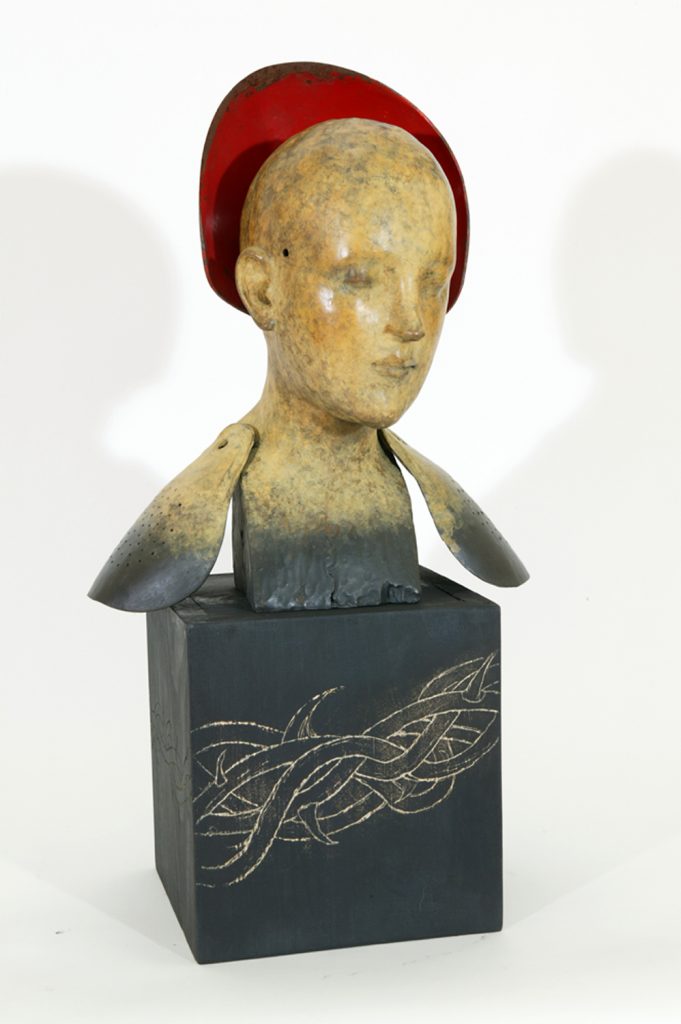
Joan of Arc: Vox Humana (2007), bronze with vintage motorcycle part on carved and charred oak box, 22 by 12 inches
Thus began an ongoing obsession with the teen-aged warrior known as St. Joan, the Maid of Orléans (1412-1431), who claimed to have been instructed by saintly visions to support the Dauphin, Charles VII, and rescue France from English domination toward the end of the Hundred Years War. Though successful in lifting the siege, she was captured and handed over to the English and put on trial. A group of clerics found her guilty of heresy, and Joan was burned at the stake.
Such is the short version of a biography, firmly grounded in historical fact, that has intrigued poets, playwrights, novelists, filmmakers, and artists for centuries. Filippucci, too, fell under Joan’s spell, and her story was to provide the inspiration for drawings, prints, sculptures, paintings, and installations—more than two decades, in fact, of devotion to a solitary subject.
“I knew nothing about her,” the artist confesses of that first encounter. “I thought she was mythological. I didn’t realize Joan was a real person and the most written-about woman of her time. All the trials, all the interviews, everything was written down. Some of it distorted, some not.”
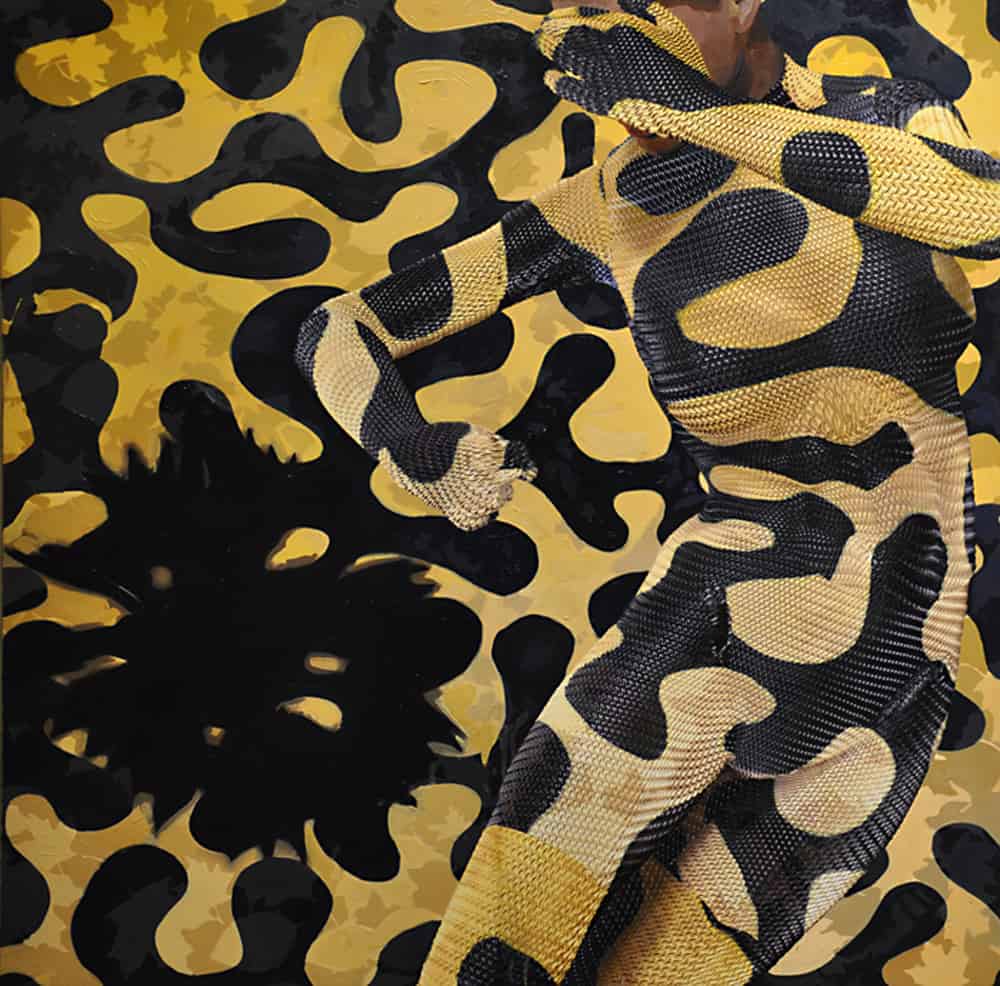
Camoflowers: Joan of Arc I (2014), oils, pigment inks on rag mounted on Birch panel, 34 by 34 inches (collection of Linda Durham)
A whiz at the computer who supports herself through a web design business known as Cybernuns (slang for female computer nerds), Filippucci has imagined the Maid of Orléans in many different contexts—charging into battle (in camouflage, no less), as a robot, burning at the stake, and of course resurrected as a saint. In her latest incarnation, Joan is partially trapped in a cage-like skirt and screaming as forcefully and violently as any misunderstood teenager, except we know that this one is under unusual duress and about to die. Using 3D digital imaging, the artist has produced large, full-size portrayals of the saint, made even more vivid by drawn and painted marks on 75- by 68-inch birch panels. Over the years, she has imagined “dress armor” for Joan, modern-day altarpieces, portraits on panel, “narrative boxes” featuring animals from the saint’s life, and bronze portrait busts, all in an attempt to fully grasp the nature of a single, though singular, subject.
She’s also done her homework. Filippucci says she “kept digging in and trying to understand. I have all the movies, all the books, all the music. I was trying to imagine how it was that an 18-year-old whose military career lasted only a year could ride these massive horses, wearing armor, hardly eating. Where did she get the strength?”
As a young art student, Filippucci had no intention of getting so involved with a late Medieval proto-feminist heroine, or even of becoming an artist at all. She left home at 17 (about the age of Joan’s rebellion against a constricted provincial future) and put herself through art school. At first, she trained to be a scientific illustrator at a the Paier School of Art in Hamden, CT, and at the time was mostly interested in “bugs, bones, picking up roadkill and studying the anatomy.” While still a student, she was hired by the exhibits department at Yale University’s Peabody Museum to do mounted drawings of dioramas. An astute curator there told her, “You have too much personality for this kind of work. Go to art school, a real one.”
So Filippucci applied to the Maryland Institute College of Art, and headed off on a full scholarship for illustration. “While I had to take the mandatory coursework for illustrators, I was slipping into the painting classes and checking out everything else. I thought these were beyond my pay grade, it was such an amazing environment. I thought you needed special brain cells to be a fine artist.”
On a field trip to New York, she saw a show of Francis Bacon’s “screaming popes,” variations on Velázquez’s magnificent portrait of Pope Innocent X. “I was full of opinions, mouthing off,” she recalls. “Here was this amazing show, and I didn’t know how to process it, because it was way beyond anything I’d ever seen.” One of her teachers, Sharon Yates, gave her “such a look” and firmly admonished her, “Be quiet and learn to see.”
Filippucci didn’t finish school but instead moved to New York to forge a career as an illustrator; by her mid-twenties she was successfully freelancing for Sports Illustrated, the New York Times, Time, and many other leading magazines. It was not a comfortable fit, but it landed her in the company of some renowned artists in the Society of Illustrators (including Sue Coe, Guy Billout, and Maurice Sendak). “I’ve spent years trying not to be an illustrator, or rather, years trying to find my own voice,” she says. “Trying to see, to have a conversation with what I need to be doing. It comes from low self-esteem. If you’re treated roughly when you’re young, you grow up thinking you’re never good enough.”
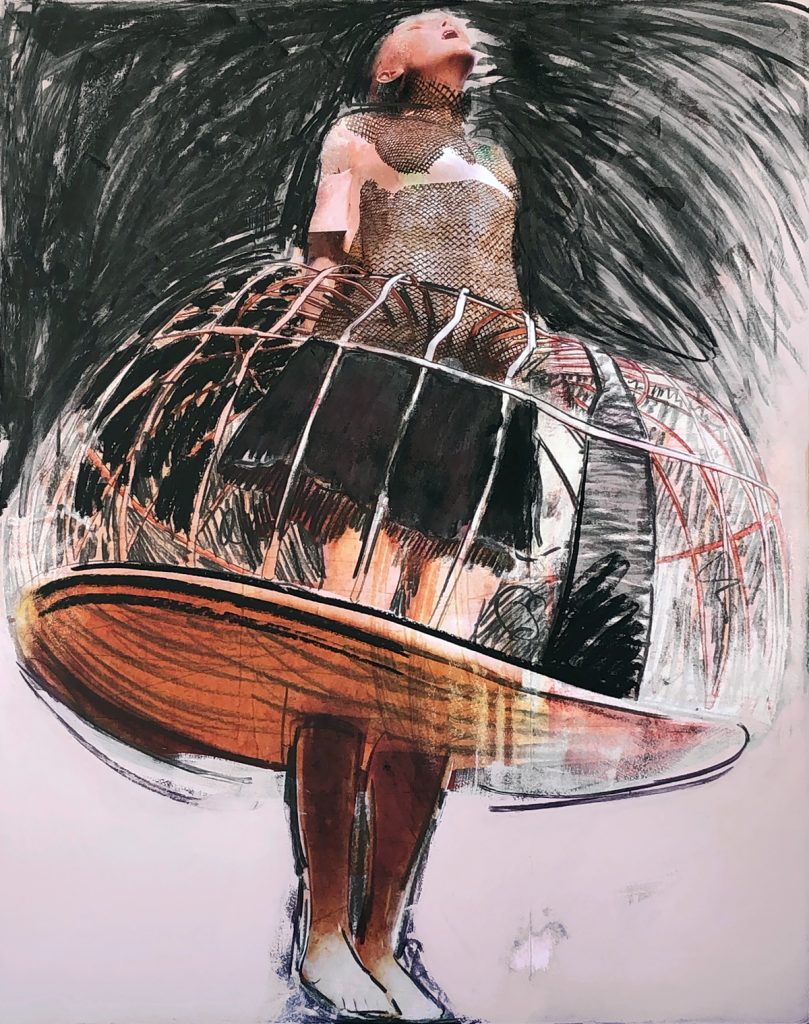
Rouen: Her Kingdom Shrinks (2019)., charcoal, latex, pigment inks on braced birch panel, 36 by 26 inches
She pulled away from illustration around the time Image Bank and other large organizations established the practice of leased images. She also met her husband, a Frenchman who designed what are known in the trade as entertainment and educational robots, and moved to Kent, CT, where she exhibited early works about Joan at the Morrison Gallery and taught herself to build websites. A few years later, she had a solo exhibition called “The Resurrection of Joan” at Colgate University’s Clifford Gallery. Filippucci was invited to lecture, and the university acquired a piece for its permanent collection.
In 2007, after her divorce, Filippucci visited Santa Fe, NM, with a friend and decided that this was the place to put down roots. “The moment we drove up from Albuquerque and I could smell the sage, I said, ‘Damn it, this is amazing. I feel so good here.’ Everything about the place was intoxicating.” Less than a year later, her son moved west to attend the Santa Fe School of Art, later graduating from Cal Arts and eventually joining his father in the robotics field.
In the last few years, the involvement with the Maid of Orléans has only intensified, leading to a show called “Joan of Arc: Voices of Light” at Evoke Gallery in Santa Fe in 2016. Filippucci found a great supporter in former gallerist Linda Durham, who curated the Evoke show, along with one called “Sheroes: She Rose” at Offroad Productions. Another exhibition, “Rouen,” is planned for 2020 at the Morrison Gallery in Connecticut.

Sandra Filippucci (photo by Audrey Derell). For more about the artist, visit sandrafilippucci.com
“I spent years chasing Joan,” Filippucci says. “It’s only now that I realize the work is leading back to me. She is the conduit, the metaphor, the cage I put myself into when I was thinking I’m not good enough. I’m exorcising that cage-y skirt.
“It’s an obsession,” she adds, “but I think it’s a healthy obsession because it gives me courage.”
Top: Resurrection: Persecution )2002), oil, pigment inks on canvas on birch panels. 73 by 108 inches (Colgate University Collection).
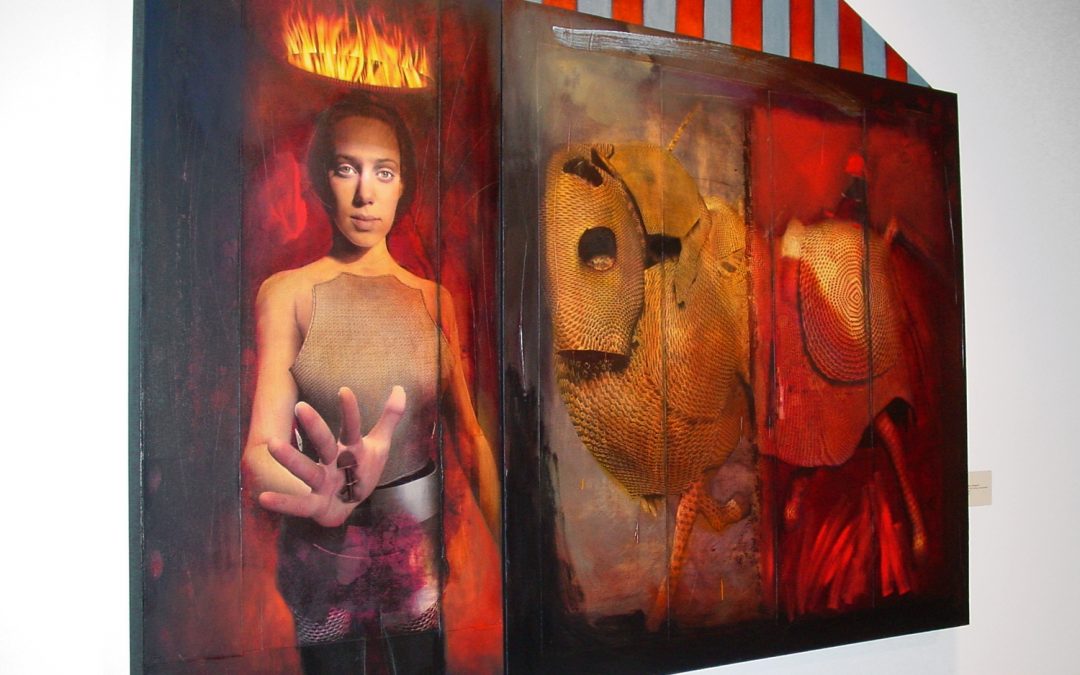
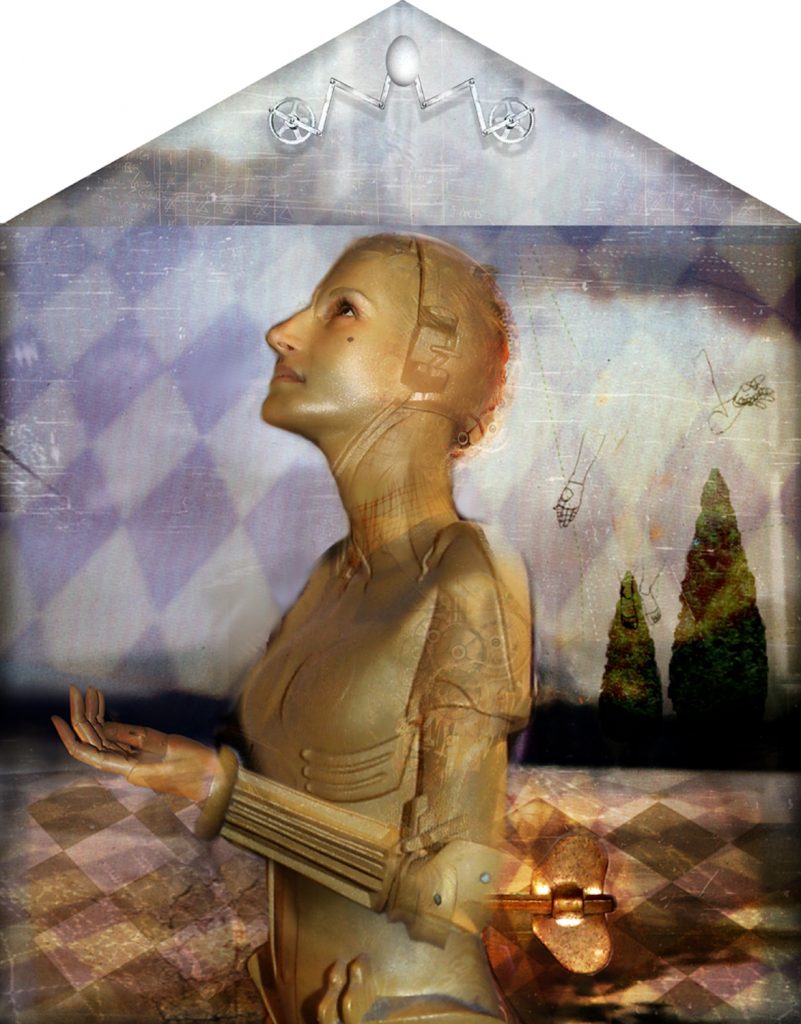
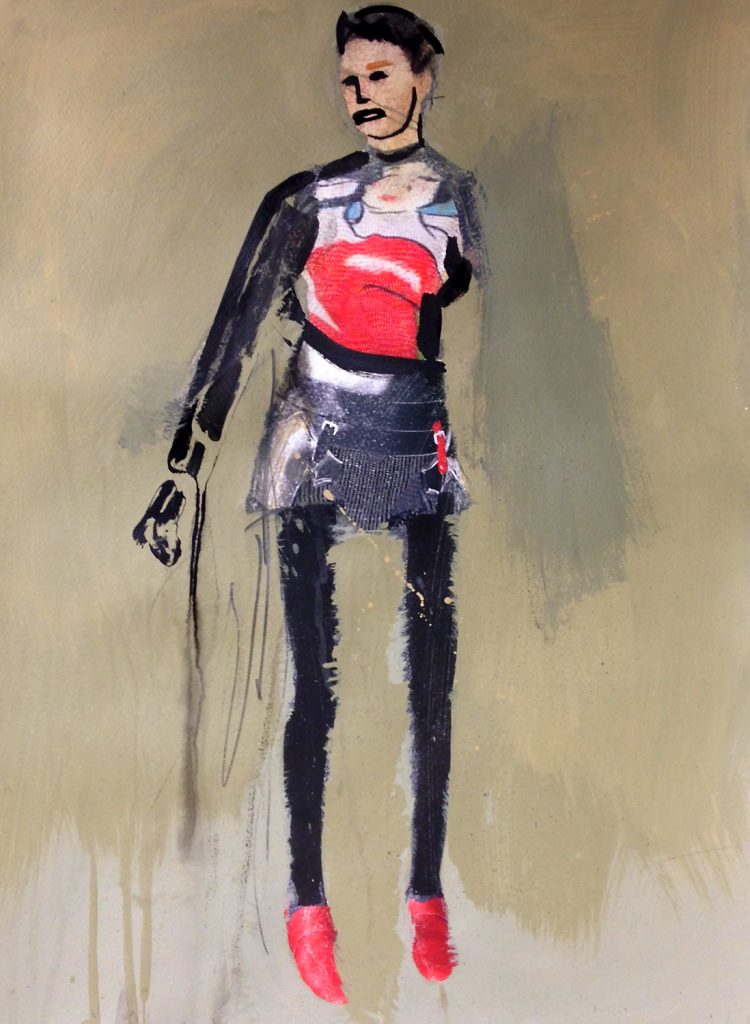
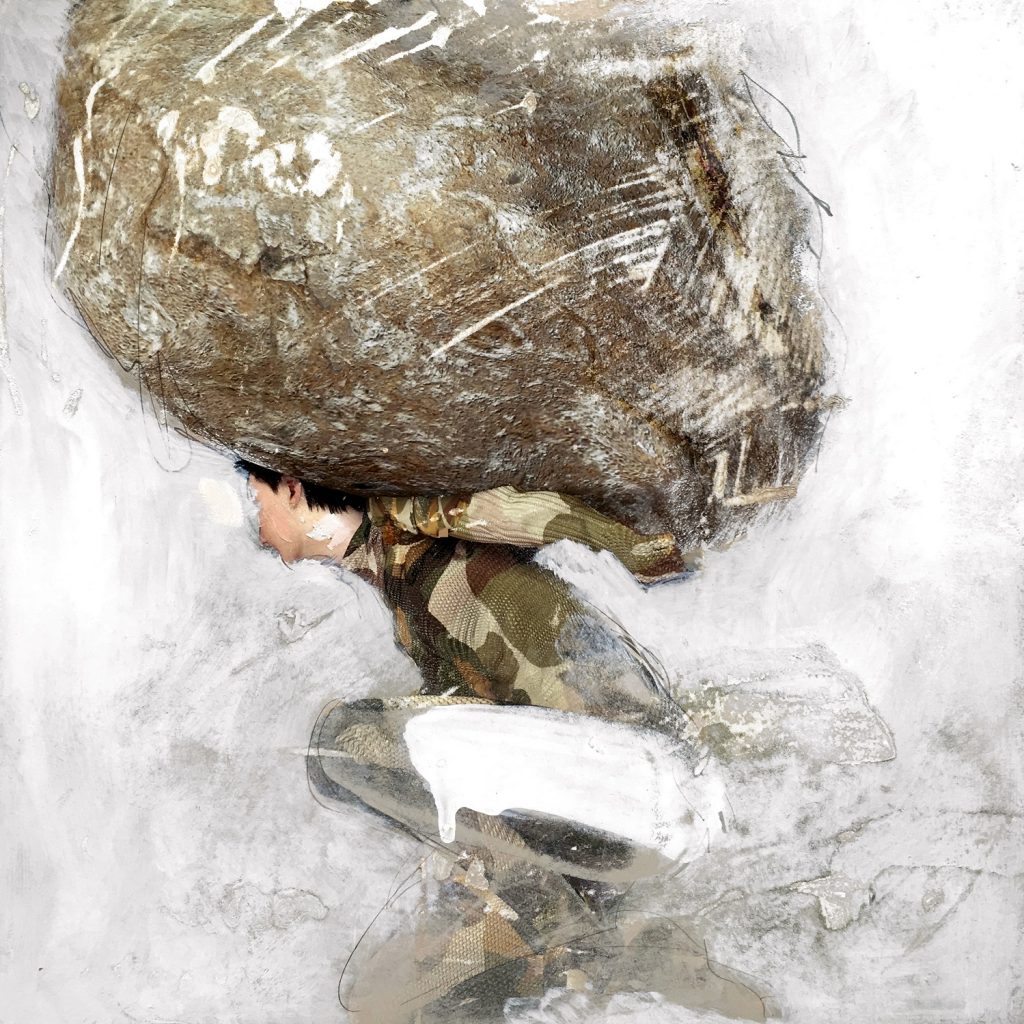
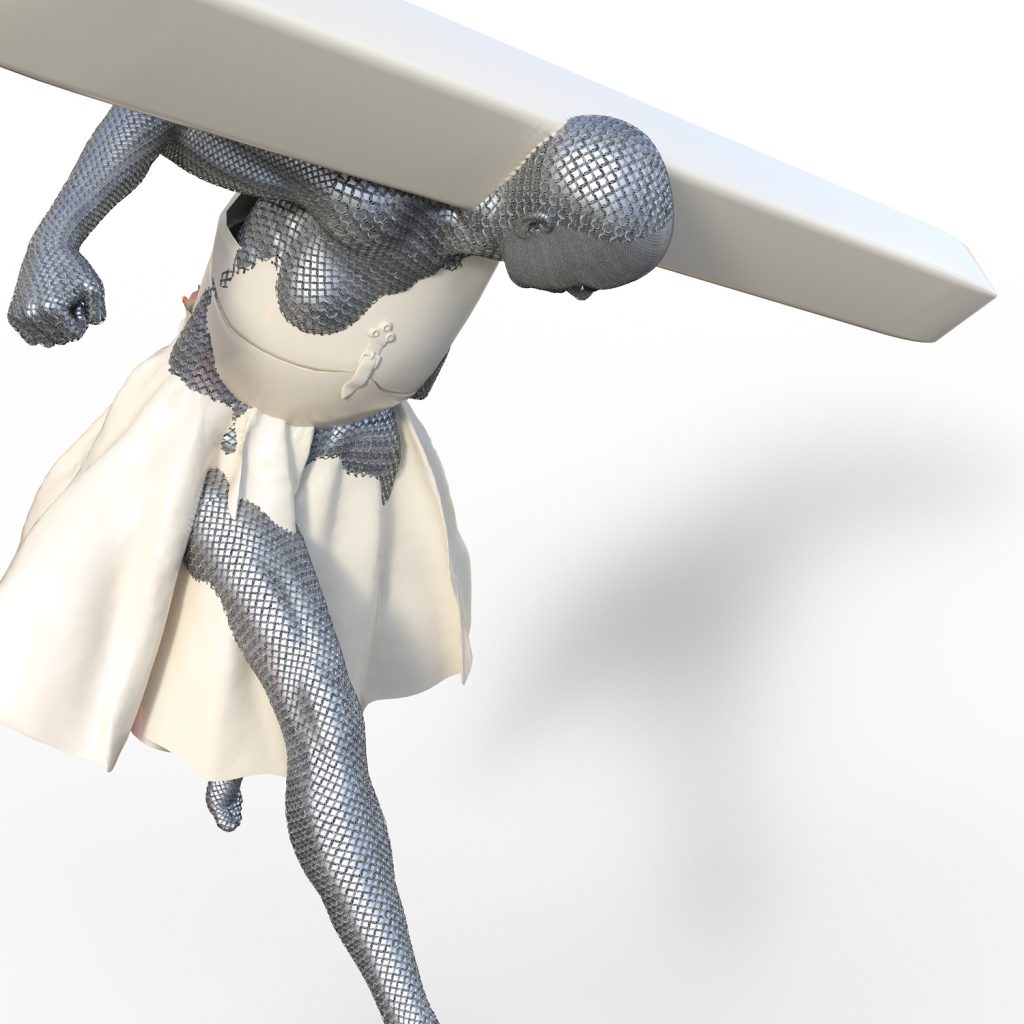
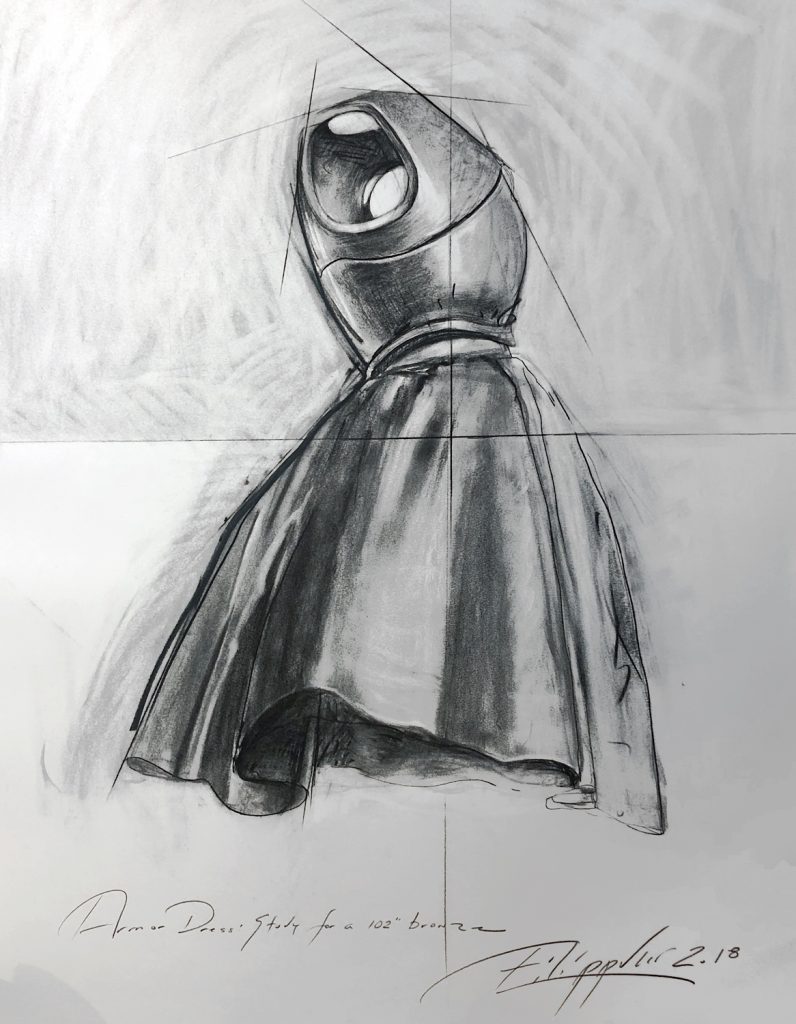
These past few years, I’ve watched Sandra evolve with her work, while remaining focused on the thread of a consistent theme. She’s currently, made a leap that has transcended and included all that has gone before, it’s inspiring to see.
Michael—how interesting that you said that and thank you. Just made a post about it: https://www.linkedin.com/pulse/last-day-my-life-sandra-filippucci
This is an amazing body of work ongoing for many years now. The armor dresses are iconic, I think, and the new work with the cages goes beyond all that has come before. This work deserves the widest possible audience. This article gives a nice sense of the evolution of Sandra’s thinking and growth.
Thank you Ann Landi, and your comment much appreciated Madison. Your enthusiasm recharges my batteries!. I also appreciate you pointing out that my site address is not there:
https://sandrafilippucci.com
So grateful that Vasari21 captured this artists slow and patient trajectory. This essay reveals the labyrinthine journey , psychic development and steadfastness that true artists like Filippucci embrace to communicate the deepest webs. Thank you both to Sandra and Vasari21 for the insights hear. Very inspired!
Paula. As a daughter of the soil here, your work journey has also captivated me. I have watched you since the days of William Siegal and am thrilled to have one of your pieces. Thank you for what you wrote.
I have always admired Filippucciart. I am drawn to the dedication and inspiration Joan has given to Sandra. The attention detail is breathtaking. Every piece of work is Powerful, Inspiring and Energizing!
Thankyou Sandra for your Amazing body of Art and the strength it generates to others like myself.
Thankyou Joan of Arc.
Kudos to the astute curator who suggested you have too much personality to be doing scientific illustrations.
He was spot on, sometimes we need someone to give us a kick in the tush, you were that for me.
I have watched you unveil Joan layer by layer over the years. Sometimes venturing into other subjects. It always comes back to Joan, like she haunts your dreams to keep her image and message alive.
These last few years your art has exploded. Something brought you to a whole new level. Your latest work is a much deeper vision. It’s like you looked into her soul and said “ I’ve got you.”
This is her time, this is your time, every woman’s time.
I know there have been many other mentors over the years, that have given you that inspirational kick.
For those of you mentors out there, keep a keen eye out for those promising artists with that something special about them. Give them a kick, look what can happen.
I wonder who kicked Leonardo DaVinci to do the Sistine Chapel……..God?
As always, generous and kind. Well said Jill. I expect to see your children’s books on the shelf soon.
Oops. Jill. Leonardo did not paint the Sistine Chapel. That was that other fellow…Michelangelo. Michelangelo was forced into it by Pope Julius II because Michelangelo was primarily a sculptor so there was a lot of kicking.
Such an amazing piece … I believe we need to embrace the arts more in this country; last night I showed this article to my 6 & 9 year old sons; which lead to a discussion of design work, as well as Joan of Arc and what she stood for. I slowly went through each picture and watched their minds take it all in, the colors and the flow … tied into her symbolism and what she stood for!
That was quite excellent that you did that…show the article to your sons. Just terrific. Thank you for taking the time to comment but mostly, thank you for taking the time to have a dialog with your sons about art.
Great piece!!! It’s beautifully written – I love how you, Joan and the cage are intertwined throughout time and throughout the piece. And love that metaphor! The work really is stunning – personal, historical, universal and provocative.
Bravo!!!!
Thank you Marie! And wishing you all success with your film, “Walking Thunder,” that was just playing in Taos. You and Cyril have become great educators about endangered animals.
If any of you wish to learn more about the plight of elephants: https://walkingthunderfilm.com
I was already a huge fan of Sandra’s work…but after reading her bio, history and her love for Joan of Arc, makes me even more enamored with her paintings. She is a modern day heroine…May her paintings live on and remind us that victory, truth and solace are abundant during these turbulent political times.
In deep honor of your work,
Shera
As Sandra’s unartistic brother, I have unavoidably bumped into the traces left by Sandra in her artistic work over the course of more than forty years without ever comprehending what was happening. These were mere bumps, eliciting a mundane, but appreciative, “oh, that’s nice,” and then moving on. But more recently, that has changed, because now I see her body of work for that which it is: a supremely careful, intensely sensitive, masterfully crafted expression of the highest ideals of the human spirit. What Sandra has created with her fixation transcends the understanding, extends beyond the material, pushes past the metaphysical. Looking at Sandra’s work with Joan we see past, we see through and even beyond the actual created work of her hands. She finds in Joan the expression of all those things that make the human experience so devastating, so fragile, and yet so triumphant. It approaches, and finally touches, the spiritual. Thank you, Sandra, because you have been the vector of something good in this world – not just ‘good’ in the artistic sense, but in the moral. And we are all better for it!
Living on different continents our whole lives, and barely seeing one another, I’m astonished by what you so beautifully wrote. You think in terms of humanity and yes, Joan represented the best in us all. Still so much mystery to explore. Thank you Gunther.
I seem to always know where I am in Filippucci’s art, but not necessarily where she will take me. I love the passion, how heartbreakingly beautiful Sandra has allowed Joan to become. I can feel Joan’s loneliness, her terrible agony and the distance she has to go. Sandra explores with startling clarity and teaches us the profound act of paying attention to detail. Congratulations!
Thank you. Your words amaze me and I am grateful.
A wonderful article about your work!!
Merci Annell!! I’ll be visiting Ann in her new digs in the Fall so would love to stop by.
XXOO
Exquisite article on Sandra Filippucci, a consummate Artist–who in my frequently-stated opinion— “owns” Joan of Arc!